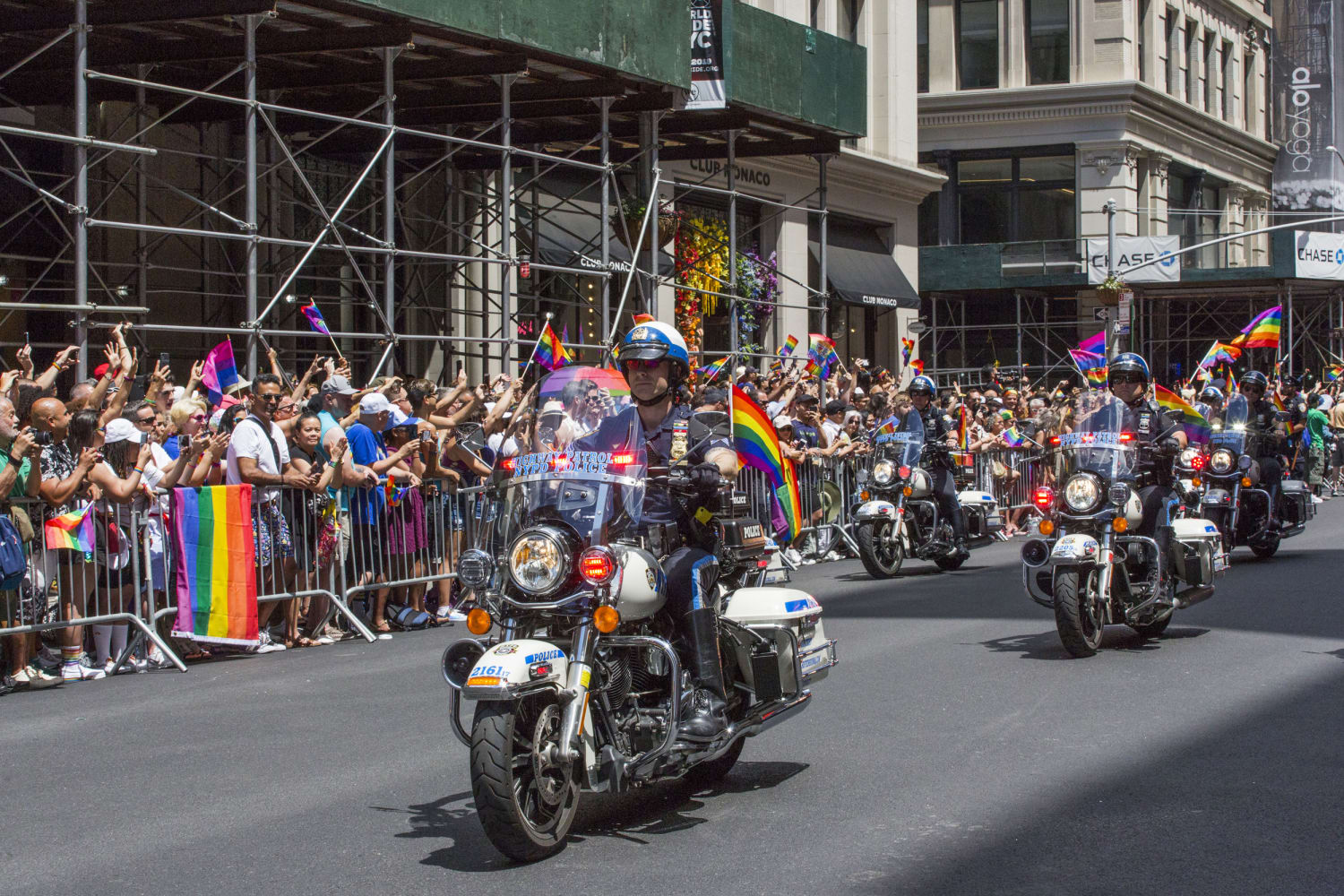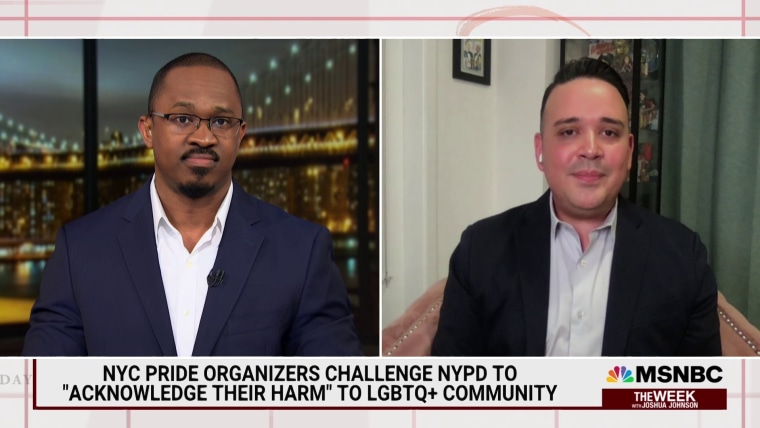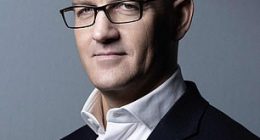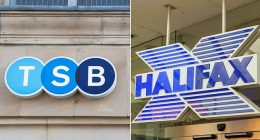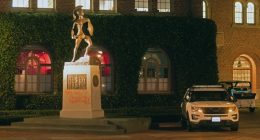The New York City Pride celebration on Sunday is a bittersweet event this year for LGBTQ+ members of the New York City Police Department, like myself, and of other law enforcement and corrections agencies. It’s a moment of gratitude for who we are, who we love and those who love us. But it’s also a moment of disappointment as it marks the beginning of our five-year ban from the signature march and other Pride events organized by Heritage of Pride, whose new board overruled its own membership in implementing the prohibition.
Today, wearing the uniform is a powerful rebuke against DeMilia’s bigotry and — in the tradition of Pride — is itself a protest for LGBTQ+ law enforcement reform.
In the ensuing debate, the issue has been distilled into a single question: Who is Pride for? For many, the answer is easy: It’s not for cops. After all, the march commemorates the 1969 Stonewall Uprising, in which the NYPD brutally enforced unjust laws that effectively criminalized being gay. The protests that followed became the foundation of the gay rights movement.
For these participants, Pride can only be true to form if it maintains its original anti-establishment bent. Stonewall is — and should always remain — a protest. But if the intervening decades of activism and progress are to have any meaning, Pride also has to be a place for those who have fought for change from within the very establishments that most need reform.
For the NYPD, that story begins with Sgt. Charles Henry Cochrane Jr., who in 1981 became the first active out gay officer in the then-136-year history of the department. In 1978, when Mayor Ed Koch first took office, he signed Executive Order 4 banning city agencies from discriminating on the basis of sexual orientation as one of his first acts. The City Council then considered legislation on making the order permanent.
At a council committee hearing in 1981, a host of organizations testified against the legislation. Among them was NYPD’s largest union, now called the Police Benevolent Association. The union’s vice president at the time, Pat Burns, stated he knew of no gay cops in the entire force.
Cochrane was also on deck to testify that day with the support of then-Police Commissioner Robert McGuire. Cochrane stepped up to the podium immediately after Burns. He declared that he was proud to be an NYPD officer — and “equally proud to be gay.” Imagine Burns’ surprise. Cochrane’s history-making declaration was met by the raucous cheers of queer activists and allies witnessing another hopeful step toward inclusion. (The council wouldn’t enshrine protections for the city’s queer workers until 1986.)
Cochrane would go on to co-found the Gay Officers Action League, or GOAL, in 1982, a pioneering organization dedicated to fighting for the rights of queer law enforcement and corrections professionals and the communities we serve. He was joined in that endeavor by Sam Ciccone, a New Jersey police officer who resigned from the job rather than have to hide his identity as a gay man.
Together with its allies, including Heritage of Pride, GOAL and its founders would build bridges between law enforcement and the queer community to help reshape a relationship that had known nothing but acrimony. Matt Foreman, co-chair of Heritage of Pride in the 1980s, specifically credited Ciccone for his efforts to bring Heritage of Pride and the police together and for pressuring the NYPD to augment patrols in Chelsea and Greenwich Village during a time of increased anti-LGBTQ+ violence in the 1980s and 1990s. It certainly wasn’t all smooth sailing, but the dedication to cooperation remained.
That cooperation allowed GOAL to successfully push for a revision of the NYPD patrol guide to address the needs of transgender and nonbinary New Yorkers. GOAL’s work with the Anti-Violence Project helped shape the curriculum of the LGBTQ+ awareness training that GOAL has delivered to every new recruit for over 20 years.
Cooperation between GOAL and the larger community also led to the creation of a dedicated NYPD liaison to the LGBTQ+ community. And GOAL’s advocacy will finally see voluntary sexual orientation and gender identity questions included on internal NYPD personnel questionnaires, allowing us to be counted literally and figuratively.
This story should rightfully have a visible place in Pride celebrations. It is one of the reasons that marching in uniform is so important to GOAL members. Just weeks after Koch signed his 1978 executive order, then-PBA President Samuel DeMilia wrote a New York Times op-ed arguing that the public’s revulsion at homosexuals would not disappear the moment a gay officer donned a uniform and that employing queer officers would be “catastrophic.”
Today, wearing the uniform is a powerful rebuke against DeMilia’s bigotry and — in the tradition of Pride — is itself a protest for LGBTQ+ law enforcement reform. If the perception of the uniform among the queer community is to be changed from one of oppression to one of inspiration, the community needs to see its allies on the inside wearing it proudly.
Our coming out stories continue, like that of Aiden Budd, who in 2016 became one of the first two openly transgender members of the NYPD to march in Pride in full uniform and who delivers transgender-specific training to new recruits; like mine, a civilian official who came out publicly at a security briefing to the LGBTQ+ community in 2019 with the support of the department and co-workers; like those of new recruits who attend GOAL meetings while still in training to become the department’s newest officers. Each story is building on Cochrane’s solitary act of protest 40 years ago.
The progress we’ve seen since that day shows a way forward: one that involves continued engagement with the community and welcomes new voices to the table without displacing those who advocate for the same goals from inside the organizations that need change. If Pride is meant to reflect our collective historical struggles while being responsive to today’s challenges, we cannot turn our backs on the successes that have already been won to achieve the successes that are yet to come.
Source: | This article originally belongs to Nbcnews.com


